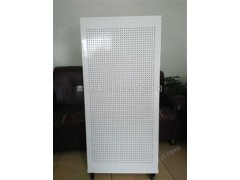- 包装:
- 瓶装
- 功能:
- 除甲醛
- 容量:
- 180ml
Truth: Formaldehyde is indeed very harmful to the human body, and it is illegal to spray formaldehyde on cabbage to keep it fresh. However, because formaldehyde is easily soluble in water and volatile, it will partially evaporate during long-distance transportation. Coupled with soaking and careful cleaning, the residual formaldehyde on the cabbage after cooking is minimal. Therefore, experts say that after these steps, formaldehyde cabbage will have a serious impact on the digestive tract and body.
Recently, some media revealed that cabbage sold in vegetable wholesale markets in Hebei, Shandong and other places uses formaldehyde solution as a preservative. After the exposure of formaldehyde in cabbage, it immediately attracted a lot of attention. There is news that formaldehyde cabbage may also cause leukemia, which has also triggered public thinking about the safety of formaldehyde cabbage: Why do vegetable vendors use formaldehyde as a special preservative for cabbage? What harm does formaldehyde cabbage do to the human body? In response to this issue, the reporter interviewed Zhu Yi, an associate professor at China Agricultural University who studies food safety.
Food safety issues continue to touch the nerves of hundreds of millions of consumers. In fact, as early as a few years ago, the problem of cabbage sprayed with formaldehyde appeared on the market. Zhu Yi said that the temperature in summer is high, and the cabbage has a high moisture content. At the same time, because many vegetable merchants lack the refrigeration equipment required for long-distance transportation of vegetables, many cabbages will rot and spoil during transportation. In order to reduce economic losses, many vegetable merchants use formaldehyde as a preservative for cabbage, spraying formaldehyde on the cabbage to keep it fresh. This not only maintains the freshness of the cabbage, but also avoids economic losses for the vegetable merchants.
So, what is the principle of using formaldehyde to preserve cabbage? It is understood that formaldehyde is a very powerful bactericide with antiseptic, sterilizing and stabilizing effects. Chinese cabbage needs special preservation because the Chinese cabbage with the roots cut off is actually still alive. The picked part is called a leaf ball in agriculture, which is actually the complete plant with the roots removed. This is different from tomatoes, cucumbers, Or spinach and other leafy vegetables are different. On the one hand, this kind of Chinese cabbage is in a cutting state, and various enzymes and proteins are in direct contact with the air at the incision. The physiological and biochemical activities are enhanced, which accelerates the aging and browning of the tissue. On the other hand, the cross section of the cabbage will seep into it. It produces a large amount of juice, which is rich in sugars and other nutrients, and becomes a breeding ground for bacteria and fungi to multiply. Formaldehyde can inhibit bacteria, so to a certain extent, it can indeed keep cabbage fresh and make it less likely to rot.
In 2016, the World Health Organization issued an indoor air report, which paid great attention to formaldehyde pollution in the indoor environment. It was proposed that excessive formaldehyde in indoor air would damage lung function and may cause nasopharyngeal disease. pain and leukemia. Formaldehyde is a colorless, pungent gas with a strong odor. After inhaling high concentrations of formaldehyde, severe respiratory tract irritation and edema, eye irritation, headache, and bronchial asthma may occur. Earlier, the World Health Organization had identified formaldehyde as a carcinogen.
So how to control formaldehyde in the home?
Decoration pollution is an inevitable problem that we need to solve. So, how to remove decoration pollution? Let’s hear what experts have to say. Mr. Li, a member of the China Indoor Environmental Monitoring Working Committee, put forward relevant suggestions. In an interview with a reporter, he said: I have the following suggestions on how to control indoor formaldehyde pollution: First, ensure indoor ventilation. The amount of pollution released by various decoration materials in a newly renovated house is the largest, so it is best to open windows for ventilation.
Second, plant some green plants indoors, such as pothos, spider plant, tiger orchid, etc. Green plants can absorb some harmful substances indoors, but the effect is not very obvious, but it can also play a role.
Third, use activated carbon. Compared with green plants, activated carbon has a stronger adsorption function. The cycloconamic live ore currently on the market is a better choice. It uses imported active volcanic ores, sepiolite and other pure natural ores and non-metallic rare earth ores. , developed through scientific proportioning, has the self-decomposition ability of nano photocatalysts, and reduces the decomposition of adsorbed harmful gases under sunlight.
Fourth, air purifier. Air purifier is the best household appliance to solve indoor pollution. In fact, the origin of air purifier is to solve... Its role in the indoor environment is to filter harmful substances in the air and achieve the effect of purifying the air. It should be noted that the air purifier must be used in a closed indoor environment.
Fifth, herbal spray Dyalin. Dialin is a plant extract extracted from more than ten natural plants such as aloe vera, moso bamboo, monstera, palm ginseng, honeysuckle, dandelion, etc. through pure low-temperature nanoscale membrane infiltration and purification technology. It is not mixed with industrial flavors and has no artificial chemical ingredients. The product itself has a herbal flavor and is not harmful to the human body. Spraying directly on furniture, floors, beds, sofas, walls, curtains and other pollution sources will not leave traces, cause no secondary pollution, and has no corrosive effect. Can be treated directly at the root cause. To sum up, although decoration pollution is terrible, it is not without solutions. To control pollution, we need to take appropriate measures. It is best to ask professional personnel to detect and confirm the source and scope of pollution before carrying out treatment, and then carry out pollution treatment.







 Year1
Year1




 WhatsApp
WhatsApp





